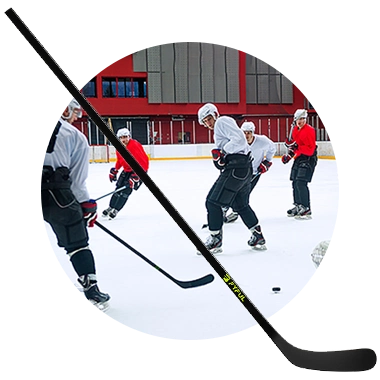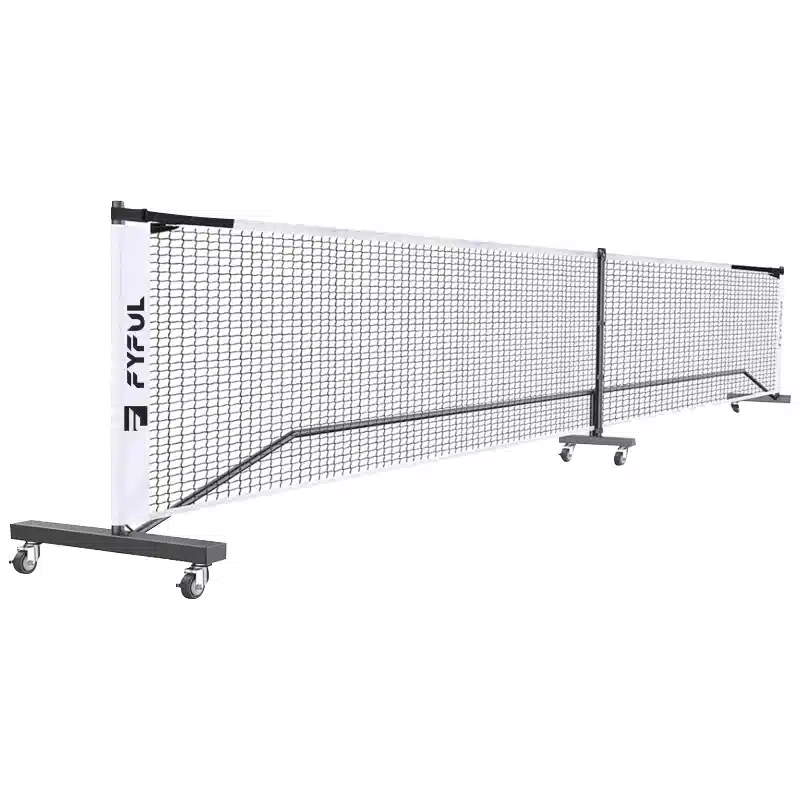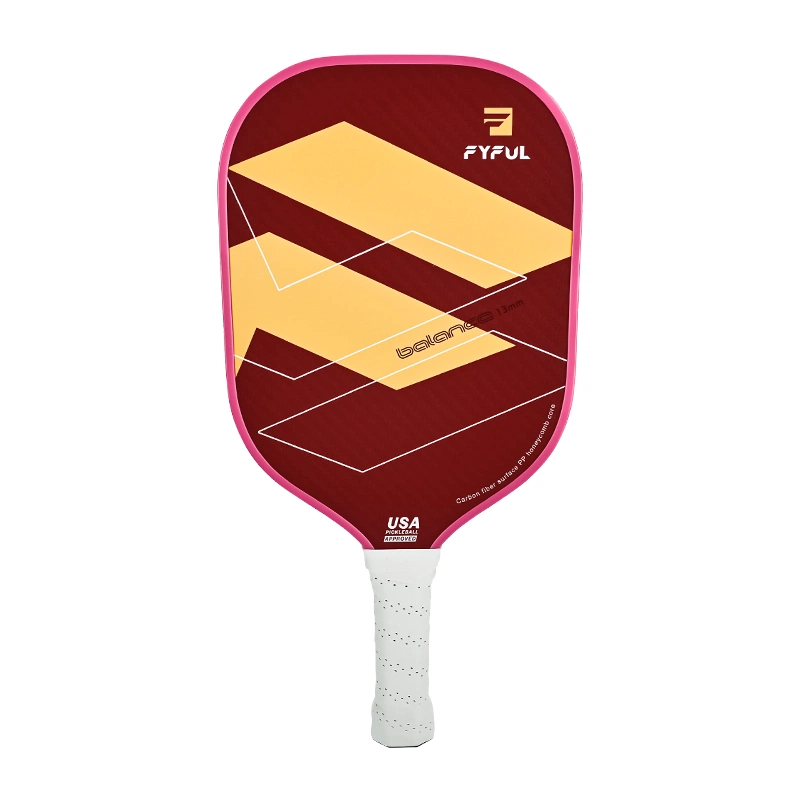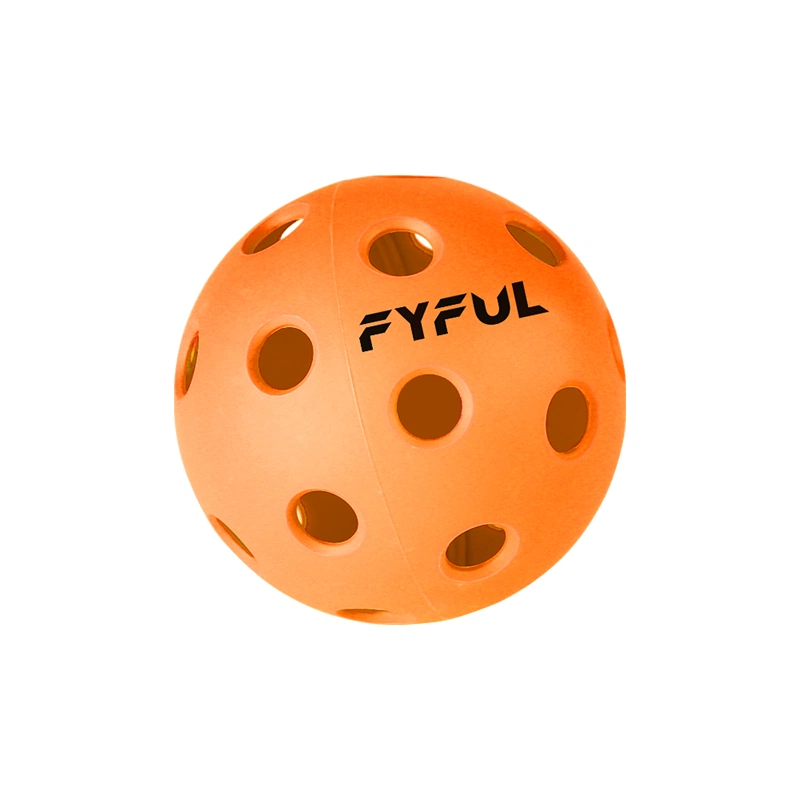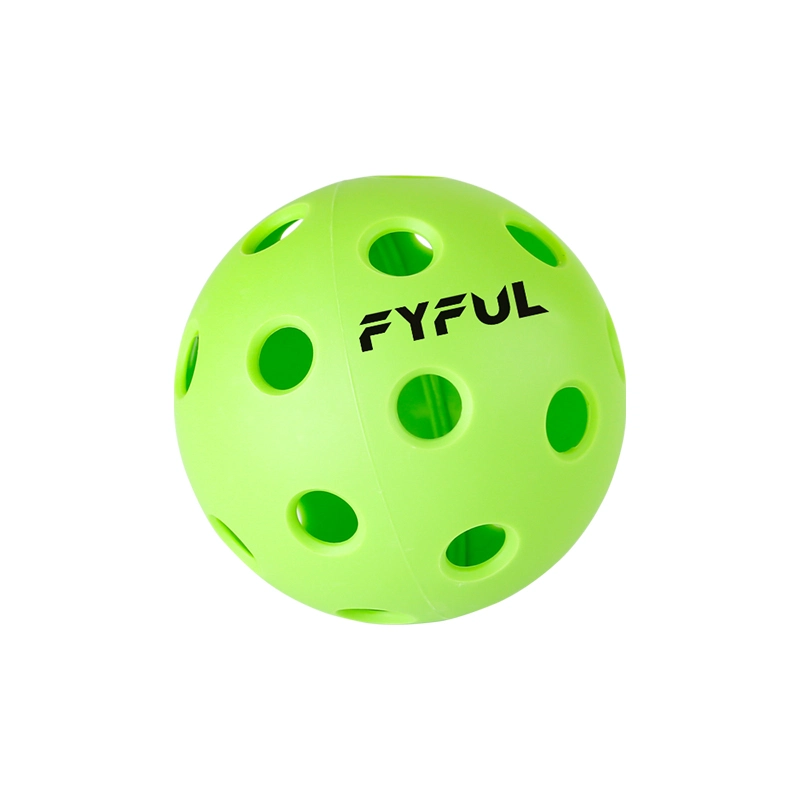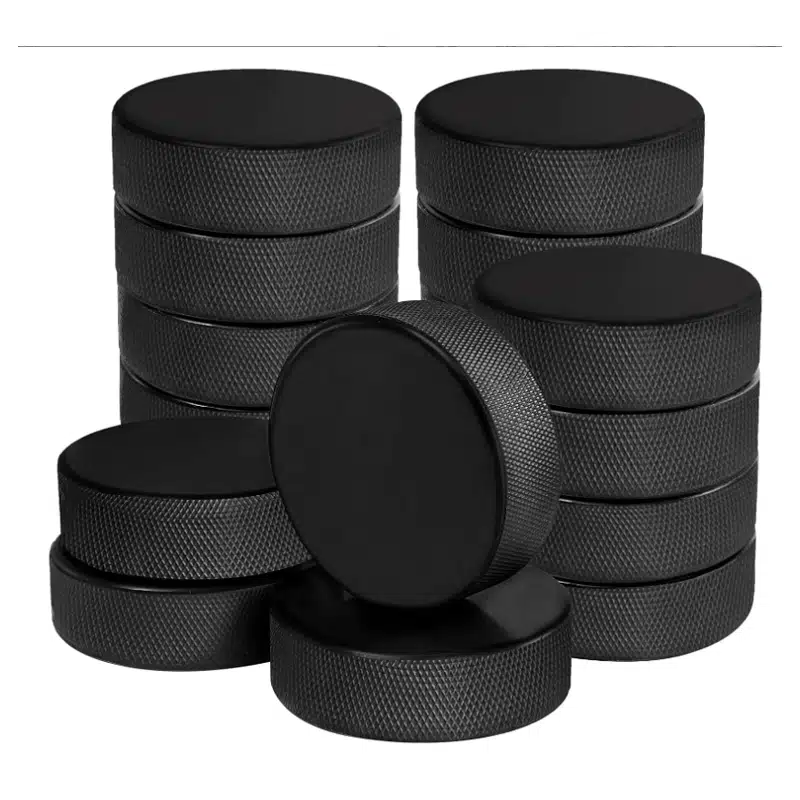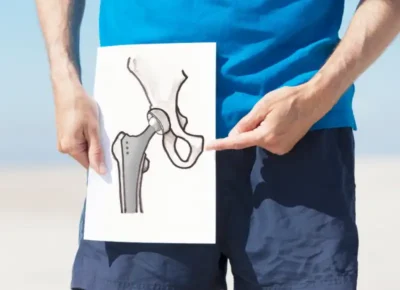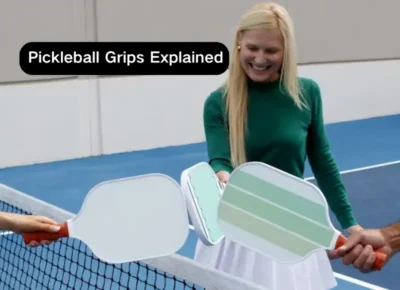Table of Contents
Even though it is a sport that requires very few tools to play, the same cannot be said about the pickleball paddles. In fact, a major difference between a professional pickleball player and a beginner can be realized with their knowledge of the paddle.
Difficulty in Picking a Suitable Pickleball Paddle
Major Components of a Pickleball Paddle
- Handle or Grip: The handle is the part of the paddle that players hold during the game. It plays a crucial role in determining the overall feel and control a player has over the paddle.
- Core: The core is the central part of the paddle, sandwiched between the paddle faces. It provides the structure and contributes significantly to the paddle’s performance. Different materials, such as Nomex and polymer, are used for cores, each offering unique characteristics.
- Paddle Faces: These are the outer surfaces of the paddle that come in direct contact with the ball. The material used for the faces, such as fiberglass, graphite, or carbon fiber, influences the paddle’s response and the player’s ability to generate power or finesse.
- Edge Guard: The edge guard is a protective strip around the perimeter of the paddle. It helps shield the paddle from damage, especially during accidental collisions with the court or other paddles.
- Weight Distribution: The distribution of weight throughout the paddle affects how it feels during gameplay. Whether the weight is concentrated more towards the head, the handle, or evenly distributed can impact a player’s comfort and playing style.
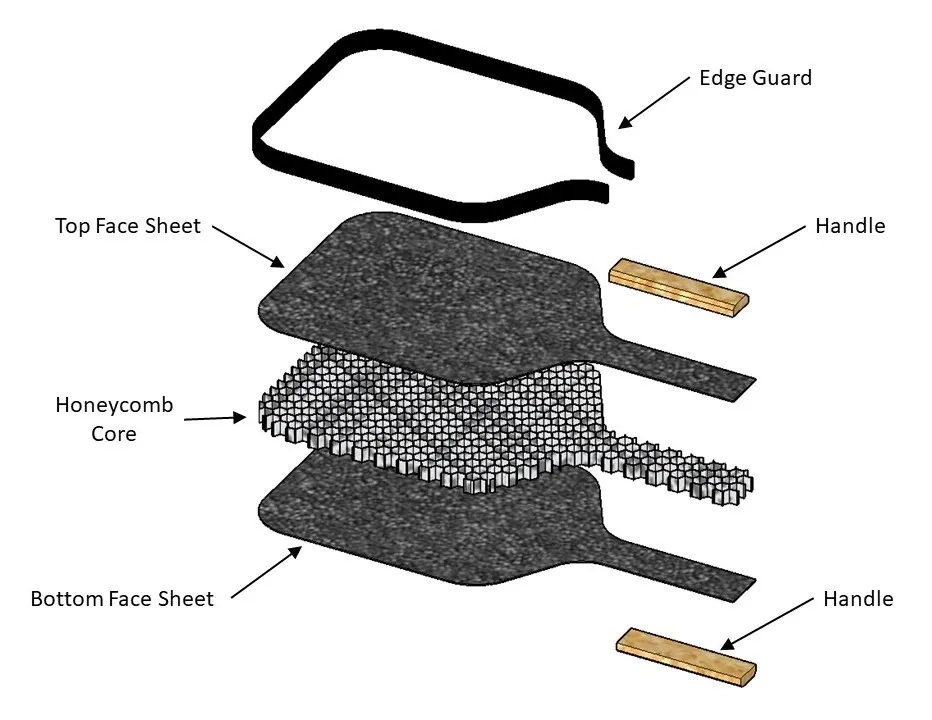
Top 5 Considerations on How to Choose a Pickleball Paddle
1. Pickleball Paddle Core Materials
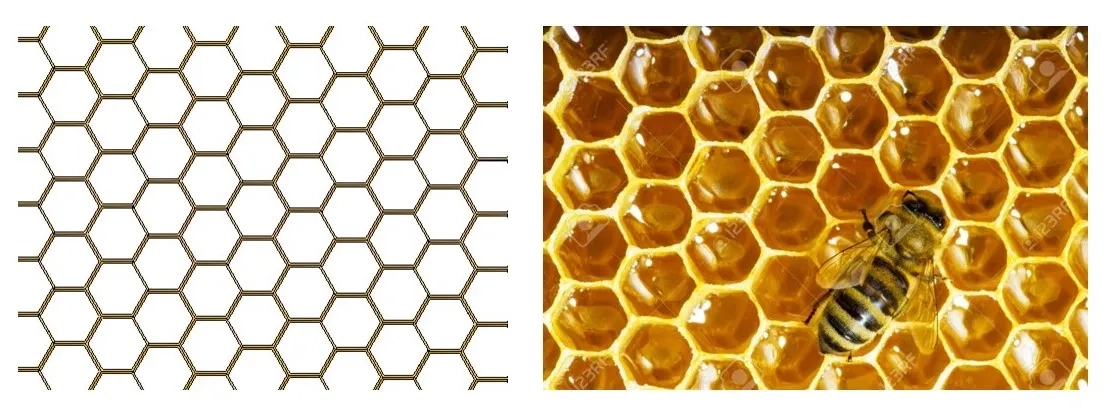
How to choose a pickleball paddle core?
- Nomex Core Pickleball Paddle
- Polymer Core Pickleball Paddles
Nomex is an incredibly strong, lightweight yet dense polyamide that is used in everything from floors of airplanes to military uniforms. So, it’s safe to say that the pickleball paddle core made from Nomex is strong.
The spring uncoiling effect makes it bounce off at significant velocity.
It was first invented in the 1980s with a collaboration between a Boeing engineer and a pickleball fanatic, Arlen Paranto. It was the first-ever composite pickleball paddle in which Nomex material was used as core material.
Nomex core is a better option because it comprises smaller but more numerous honeycombs than any other composite material. This in turn increases the core’s surface area, giving it a more rigid core.
This Nomex core generates more power with each hit.
Today, the most popular core material is polymer core, which has both power and control.
A polymer core is also sometimes called a polycore or polypropylene core. A polymer core is a durable and highly flexible plastic material used for pickleball paddles.
The aspect ratio of power and control makes it a perfect material for players of all skills. Especially for a beginner, you should opt for a polymer core for pickleball paddles.
Although you can find many different materials out there, most of them are going to be made of polymer core.
#Comparison Chart: Nomex Core Pickleball Paddle vs. Polymer Core Pickleball Paddle
| Core Materials | Nomex | Polymer |
| Pros | – Strength and rigidity – Generates more power with each hit – Smaller but more numerous honeycombs increase core surface area – Historical significance as the first-ever composite pickleball paddle – May offer some shock absorption due to the rigid core | – Balance of power and control – Durable and flexible – Suitable for players of all skill levels, including beginners – Provides shock absorption, aiding in player comfort and technique |
| Cons | – May not be as forgiving for players with less precise shots – Rigid structure may not suit all playing styles | – Some advanced players may prefer more specialized materials – Individual preferences may vary, and some players may prefer a different feel |
| Common Uses | – Preferred by players seeking strength, power, and a more rigid core – Players who appreciate the historical significance of Nomex in paddle development – Suitable for players with a more aggressive playing style | – Widely used across all skill levels, especially recommended for beginners – Those looking for a balanced combination of power and control – Beginners who want a paddle with forgiveness and shock absorption – Versatile paddle suitable for various playing styles and preferences |
Why is it important to know the paddle core material?
2. Pickleball Paddle Core Thickness
What exactly is the core thickness of Pickleball Paddles?

#Comparison Chart: Thick Core Pickleball Paddle vs. Thin Core Pickleball Paddle
| Core Thickness | Thin | Thick |
| Pros | – More power generated during hits – Favored by experienced players seeking additional power – Enhanced power without sacrificing too much control | – Increased control due to softened impact of the ball – Suitable for players, especially beginners, who prioritize control – Forgiving for players who want a paddle that dampens ball impact |
| Cons | – May have less forgiveness, requiring more precise shots – Control might be sacrificed for the sake of increased power | – Generally less power compared to thin cores – Players seeking maximum power may find it lacking – Limited ability to put as much spin on the ball |
| Common Uses | – Preferred by experienced players who can leverage additional power – Those with developed skills looking to add more power to their game – Suitable for players who can handle the trade-off between power and control | – Recommended for beginners who need assistance with control – Players who prefer a more defensive or controlled playing style – Ideal for those who prioritize accuracy over sheer power |
Should you go for a thick core or a thin core?
3. Pickleball Paddle Surface Materials
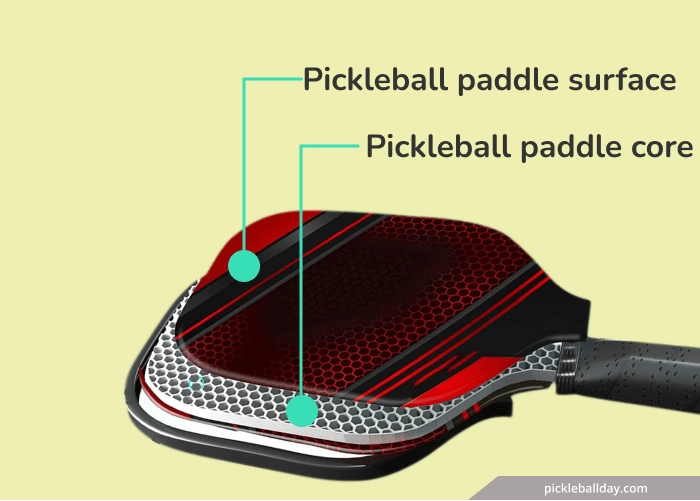
Choosing a pickleball paddle with The Right Material
- Fiberglass Pickleball paddles for Power
- Graphite Pickleball Paddles for finesse
- Carbon Fiber – Power and Finesse
Fiberglass is the heaviest material out there but is exceptionally flexible, such that when you hit a ball with a paddle that has fiberglass, it absorbs the impact a little and then fires off the face of the paddle.
The spring uncoiling effect makes it bounce off at significant velocity
If you want to check out the fiberglass pickleball paddle, you can find some of the best ones on fyful.com, cold-pressed pickleball paddles and hot-pressed pickleball paddles are both available.
Graphite is a lighter-weight material as compared to fiberglass but is equally stronger. Other than pickleball, it is also widely used in other sports.
When you hit the ball with a pickleball paddle made out of graphite, the structural composition equally spreads the force on the paddle, and as a reaction the balance in the shot is remarkable..
It gives you a large area to create that sweet spot, but it also comes at a relative power.
Carbon fiber is the best of both worlds. It gives you the power and the finesse.
It is lighter in weight and is stronger than graphite. Carbon fiber is to some extent a sub-type of graphite and is widely used in today’s world. Not just in sports, but it has a wide range of applications.
A carbon fiber pickleball paddle surface area would make it easy to balance the play and will give you enough momentum to hit with power.
If you want to check out the carbon fiber pickleball paddle, you can find some of the best ones on Fyful. We have different types of carbon fiber pickleball paddles for your selection, for example, Cold-pressed Graphite-Carbon Fiber Pickleball Paddle, which is crafted with a cold-pressed graphite-carbon fiber face and Polypropylene-honeycomb composition, and strikes the perfect balance of strength and lightweight prowess.
The Difference between Graphite Paddles and Fiberglass Pickleball Paddles
#Comparison Chart: Fiberglass vs. Graphite vs. Carbon Fiber Pickleball Paddle
| Surface Materials | Fiberglass | Graphite | Carbon Fiber |
| Pros | – Exceptionally flexible, absorbing impact and providing a spring-like effect for power shots – Heavy material for added momentum in power shots – Significant velocity in shots due to the spring uncoiling effect | – Lightweight, strong material providing structural balance and finesse – Large sweet spot due to even force distribution – Offers a remarkable balance in shots, suitable for finesse play – Versatile use in various sports beyond pickleball | – Best of both worlds, offering a balance of power and finesse – Lightweight and strong, providing both power and maneuverability – Provides enough momentum for powerful hits with balanced play – Suitable for players who desire both power and finesse |
| Cons | – Heavier compared to other materials, may lead to fatigue in extended play – May have a lower sweet spot compared to graphite | – Relative power might be lower compared to fiberglass – Some players may find it lacking in pure power for aggressive shots – Limited power compared to fiberglass | – Cost may be higher compared to other materials – Limited sweet spot compared to graphite, although larger than fiberglass |
| Common Uses | – Recommended for players seeking power in their shots, especially aggressive players – Players who appreciate a heavy paddle for added momentum – Suitable for aggressive playstyles and powerful shots | – Widely used for finesse play, offering a balanced performance – Those who prefer a lightweight paddle with a large sweet spot – Recommended for players who prioritize finesse and control | – Suitable for players who want a versatile paddle for both power and finesse – Ideal for players who want a well-rounded paddle with power and control – Offers a balanced combination for players who want the best of both worlds |
4. Pickleball Paddle Grip Size
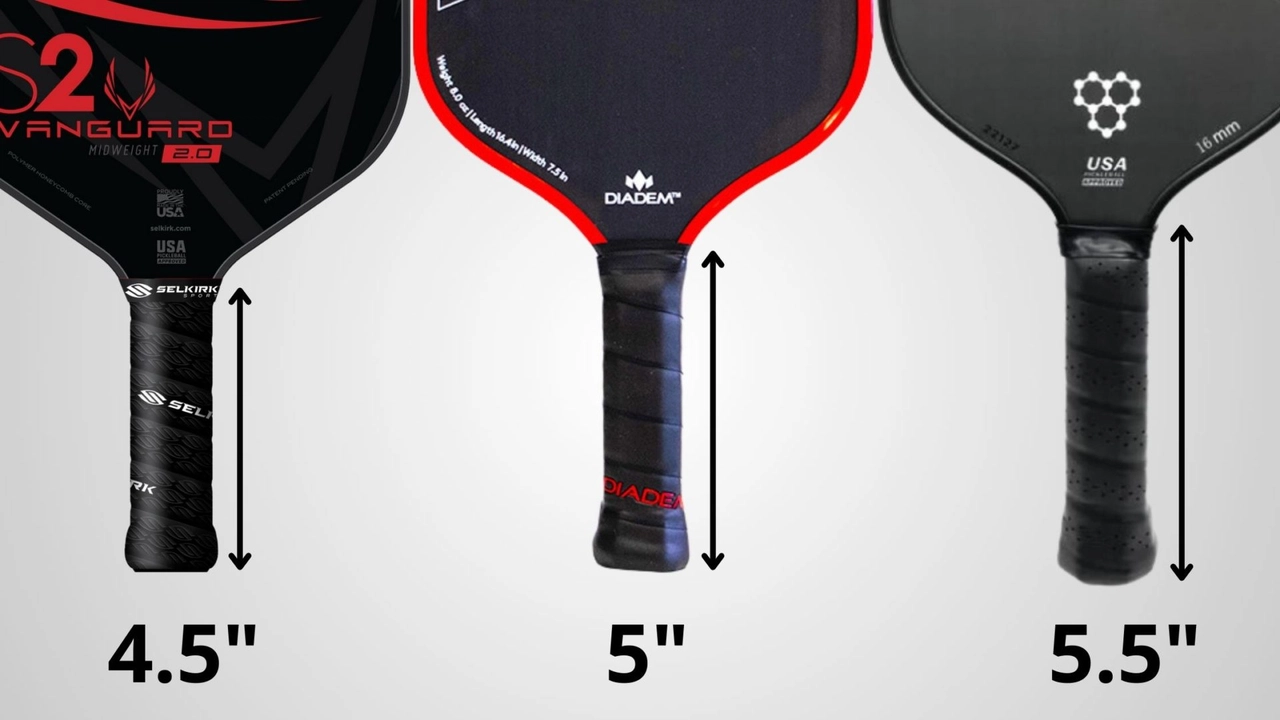
The Difference between a Paddle Length and a Grip
Grip size Options
Variance in Grip Sizes
The Right Grip Size
#Comparison Chart: Small vs. Medium vs. Large Grip Pickleball Paddle
| Grip Size | Small | Medium | Large |
| Pros | – Better control due to a firmer grip – Quicker reaction time due to a more secure hold – Reduced risk of fumbling during play – Suitable for players who prefer a compact feel | – Balanced control and power – Versatile for a wide range of players and playing styles – Comfortable for many players, reducing hand fatigue – Easier to adjust to for players with different preferences | – Enhanced power due to a larger grip – Suitable for players with larger hands or those who prefer a larger grip – Can absorb more vibration and impact during shots – Reduces the risk of grip slipping during intense play |
| Cons | – May generate less power compared to larger grips – May cause discomfort for players with larger hands – May not absorb as much vibration during shots | – Some players may find it lacking in extreme power – Not the most specialized for specific playing styles – Limited customization for players with specific preferences | – Reduced control due to a potentially looser grip – Slower reaction time due to the larger grip size – Potential for more hand fatigue during extended play |
| Common Uses | – Suitable for players who prioritize control and quick reactions – Players who prefer a compact feel and minimal hand movement – Suitable for players who prefer a firmer grip for better control | – Versatile choice for players with average hand size – Most common choice for a wide range of players – Recommended for players with average hand size and those seeking balance | – Ideal for players with larger hands or those seeking extra power – Those who prioritize power over precision – Players who appreciate a larger grip for more power in shots |
Why does the grip size matter?
Why does the grip size matter?
5. Pickleball Paddle Weight
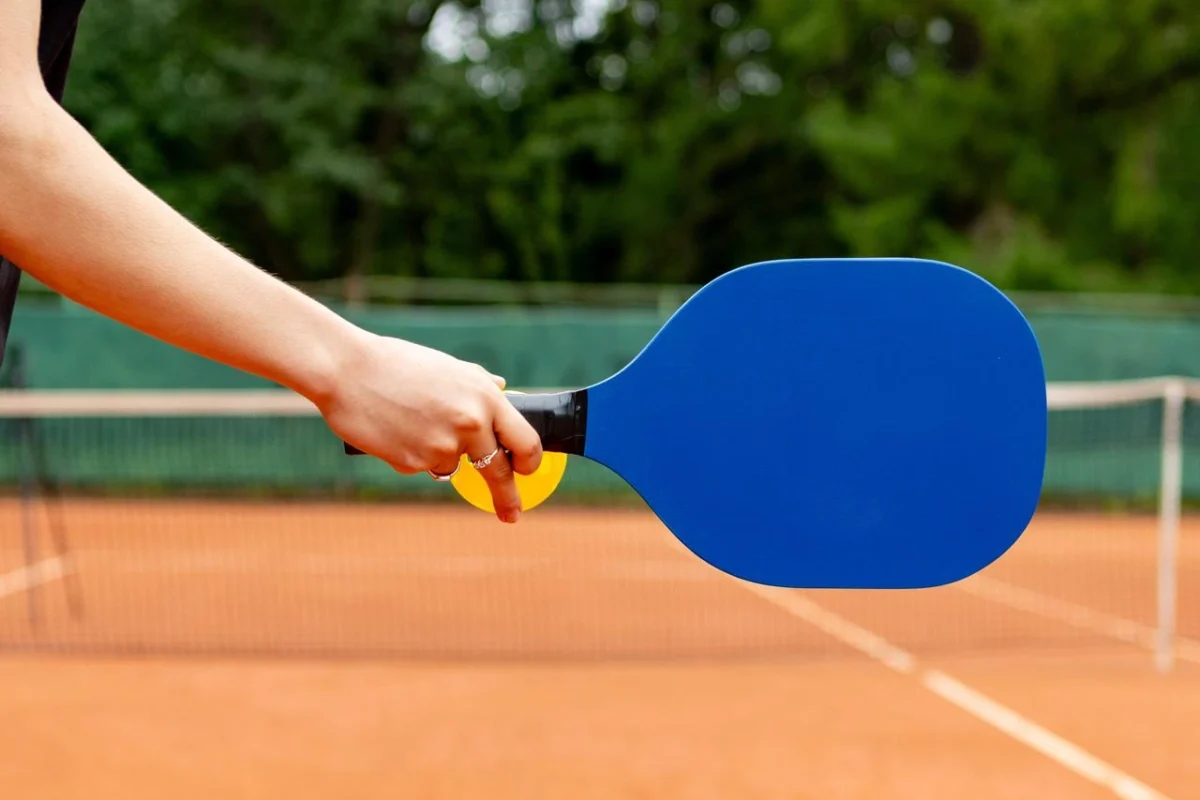
Why should you pick a lightweight paddle weight?
Why go for a midweight pickleball paddle?
When should you opt for a heavyweight pickleball paddle?
#Comparison Chart: Lightweight vs. Midweight vs. Heavyweight Pickleball Paddle
| Weight | Lightweight (Under 7.2 oz) | Midweight (7.3 to 8.4 oz) | Heavyweight (Over 8.5 oz) |
| Pros | – Better control and reaction, advantageous for near-the-net play – Absorbs less energy upon ball impact, offering a gentler reaction – Allows for quicker reactions during gameplay | – Balance between power and control, suitable for a variety of players – Versatile and suitable for players with different skill levels – Good compromise for players who want both power and control – Offers a good balance for execution in various playing styles | – Increased power in shots, beneficial for aggressive playstyles – Useful for beginners practicing control and players desiring stronger hits – Provides a stronger hit on the ball, beneficial for more aggressive shots – Can be advantageous for players looking for more strength in shots |
| Cons | – May lack the power of midweight and heavyweight paddles – Potential for less stability in windy conditions | – Not as extreme in power as heavyweight paddles – Some players may desire more power than what midweight offers – Not as quick in reaction as lightweight paddles | – More tiring during extended play due to increased weight – Limited maneuverability, especially near the net |
| Common Uses | – Ideal for players prioritizing control and quick reactions, especially near the net – Beginners focusing on developing control skills – Players looking for a lighter feel and less fatigue during play | – Suitable for a wide range of players with varying skill levels – Players who want a balanced paddle for both power and control – Versatile use in various playing styles and strategies | – Recommended for players seeking maximum power in their shots – Beginners practicing control and experienced players desiring more strength – Those willing to trade maneuverability for increased power |



